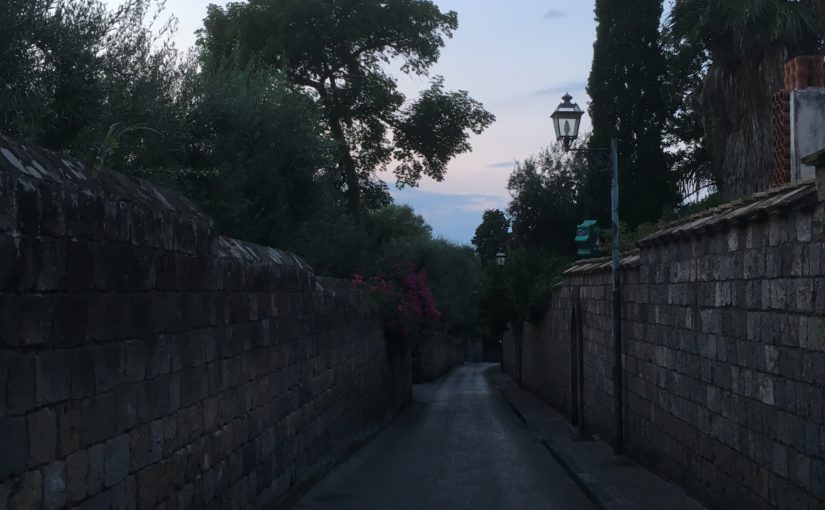Dear reader,
This Thursday, I was awakened by the sound of church bells. This, in and of itself, was not out of the ordinary. The Church of Sant’Anna (the small parish that serves the port neighborhood of Marina Grande) is practically a stone’s throw away from my bedroom window, and it rings bells during the day to mark the hour.
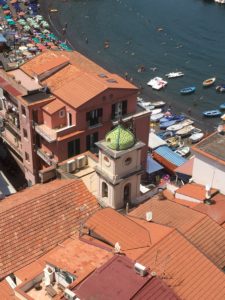
Two things, however, made Thursday’s bells unusual. First, the bells rang in a continuous peal, not in the measured chiming of a clock. Second, they rang at approximately 4:45 in the morning.
As I soon learned, July 26 is the feast day of Saint Anna, the patron saint of Marina Grande. To celebrate, they had Mass every hour from 5 am to 12 pm, and twice more in the evening. There was also a festival with food and games that night. The bells to invite the faithful to Mass rang out at a quarter-to-the-hour all morning. The car horns (or possibly boat horns–after all, it is a fishing neighborhood) started around 7 in the morning. The fireworks started at 8.
I now digress, very briefly, to tell you all about one unexpected aspect of a summer in Sorrento: the fireworks. I may have missed the 4th of July shows, but I have more than made up for it in my time here. The smallest festivity is not too small for fireworks in Sorrento.
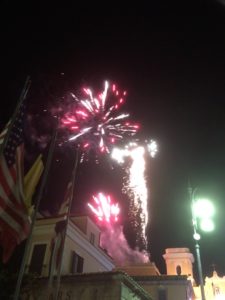
Many of them are set off from the dock in Marina Grande, which is quite close to my dorm. The sound that they make at such close quarters is incredible. I can only do it justice by saying that it sounds like a bomb exploding in my immediate vicinity (which gives you an idea of how alarming they are when unexpected). Even with the noise, I love all the fireworks. There have been some truly spectacular shows.
The celebration of Saint Anna has been going on all week, and won’t be over until Monday. For me, it’s been a window into a very Italian tradition. After all, I’ve never seen an American neighborhood throw a week-long party to celebrate their patron saint. The Catholic faith has left deep imprints on Italian life, even though many modern Italians are not practicing Catholics.
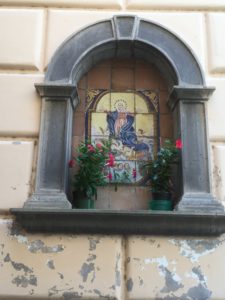
According to the woman with whom I meet to practice Italian, these saints’ days are a lot like Christmas in America. Almost everybody celebrates Christmas, even though many Americans are not Christian. It’s not an exact comparison, however. For one thing, there’s only one Christmas, while there are saints’ days celebrations at least once a month. For another, the celebration of a patron saint is a highly local affair. For example, Marina Grande celebrates Saint Anna, but central Sorrento celebrates Saint Anthony. Therefore, if I walk five minutes from my dorm in one direction, I’m in the middle of a festival. Five minutes in the other direction, and it’s business as usual.
Tradition in Italy stretches back even farther than Christianity. For example, businesses in Sorrento tend to stay in one family. One of my peers who works in Sorrento even calls them “hereditary.” According to my professor, this can be traced to the fact that Sorrento was founded by the Romans, for whom family was very important. To support his claim, my professor said that a woman from Sorrento, if she marries into a prominent Sorrentine family, will introduce herself thus: “My name is —-, wife of—–.” Meanwhile, in Massa Lubrense, a town only 5 miles from Sorrento, a woman always simply states her own name. Massa Lubrense was founded by the Greeks, for whom family was not as important as it was for the Romans. My professor claims this is the reason for the small cultural differences that exist between the cities to this day.

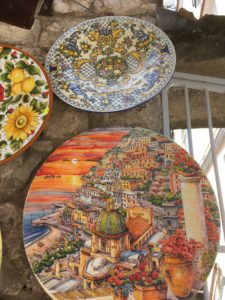
I asked my Italian-speaking partner about other aspects of tradition in Italy. For example, wasn’t it true that Italians gathered as a family, Thanksgiving style, very frequently? Yes, she told me, but most do it out of “tradition.” For many Italians, the big family gatherings are a duty, not a joy. In fact, she says there is too much tradition in Italy. She envies America’s lack of tradition, because it leaves us free to focus on the future. In fact, one of the most common descriptions of America by Italian locals is “young.”
One reason I’m able to get locals’ views on all this is that the locals are finally starting to speak to me in Italian. Many speak to me in English at first, but once I respond in Italian, they will switch as well. It’s a little thing, but it is a tangible sign of progress, and therefore very encouraging. My greatest success happened yesterday, when an Italian woman not only responded to me in Italian, but actually had a long conversation with me. She described the language barrier she faces every day with tourists who don’t speak Italian, and she told me about her dreams to visit America. I only caught about 75% of what she said, but it was enough to keep the conversation going. I am thrilled.
Meanwhile, I have been studying for my final exams, a sure sign that the end is near. Four weeks down, one more to go. As always, thank you for accompanying me on my Italian adventure.
Until next time,
Beatrice
